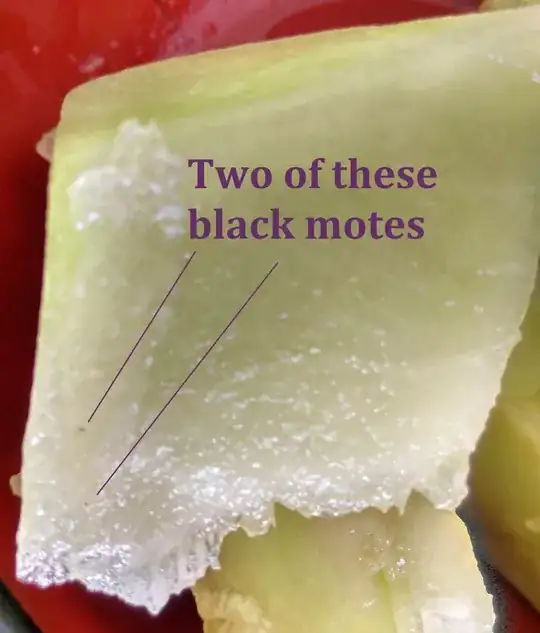Here's my procedure for cutting melons:
Wash the original whole under tap water.
Wash the peeled melon again under tap water.
Wash my cutting board and entire knife.
Cut the peeled melon.
For convenience, call these tiny bits 'motes'. Possibilities for their origin:
Growth inside. But how can they originate from inside?
Originally on rind? They might've fastened to the knife while I cut the rind, and became transferred to the inside. But this looks unlikely: see 4 overhead.
